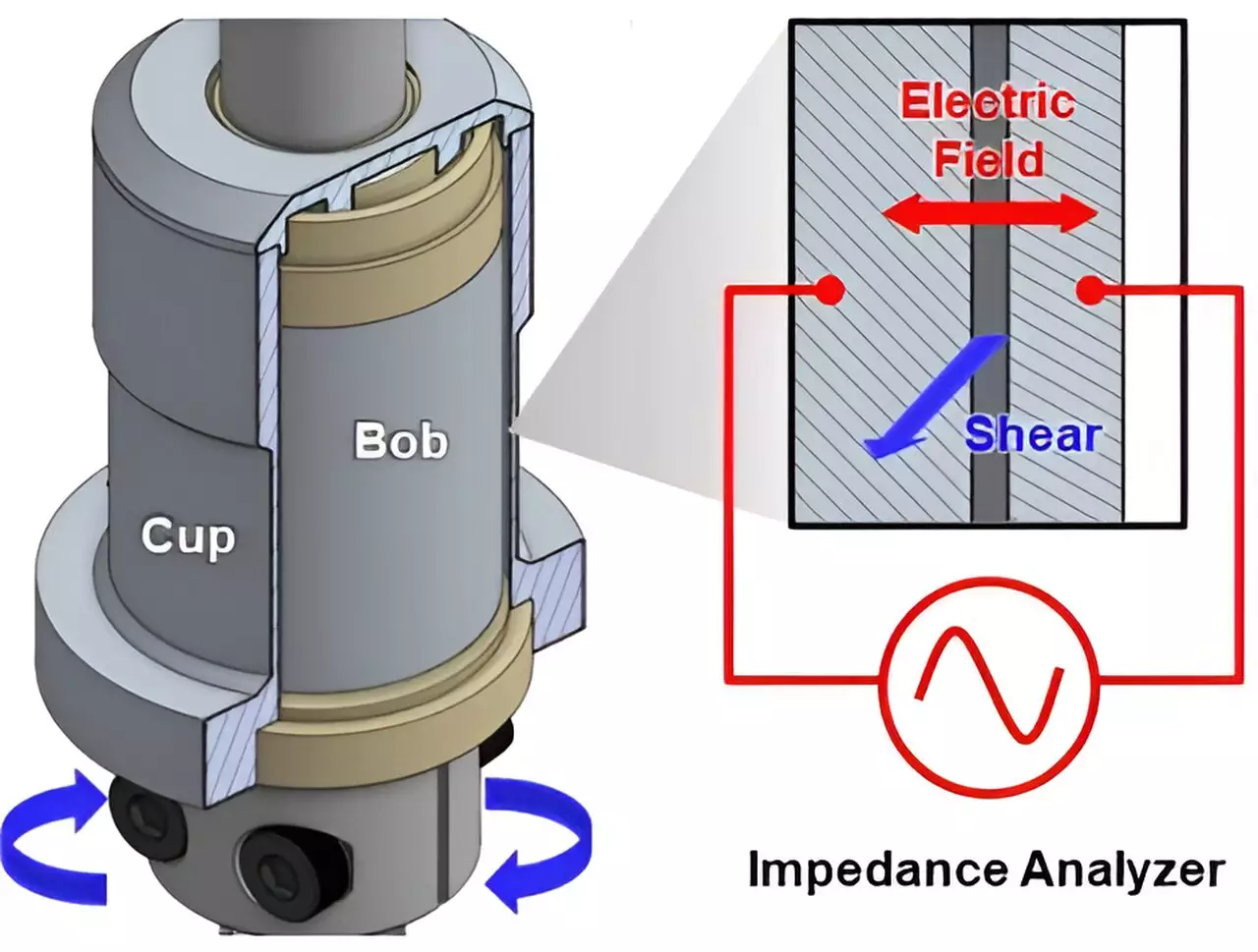In the world of technological advancement, the significance of trial and error cannot be overstated. Historical figures like Thomas Edison exemplified this through their relentless testing of materials, ultimately leading to groundbreaking inventions such as the lightbulb. Today, that same spirit of innovation thrives within the realms of energy storage and electrochemical devices, particularly batteries. The continuous evolution of these systems is not achieved through random experimentation alone; it hinges on a profound comprehension of the principles that govern material performance.
Recent research conducted by a collaboration of experts from the University of Delaware (UD) and Northwestern University delves into this very understanding. Their work, published in the *Proceedings of the National Academy of Sciences*, highlights new insights into how electrons move through complex materials known as slurries, which play an essential role in the operation of batteries and other energy storage solutions. By bridging the gap in knowledge regarding electron transfer within slurries, the research paves the way for future advancements in energy technology.
At the heart of this significant research are the contributions of multiple experts, including UD’s Norman Wagner and Northwestern’s Jeffrey Richards. The collaborative approach taken by these researchers underscores the importance of teamwork in scientific progress. Lead authors, including UD alumna Julie Hipp, now a senior scientist at Procter and Gamble, and Paolo Ramos of L’Oreal, bring with them a wealth of knowledge and experience from various sectors. Their combined expertise allowed them to systematically analyze the behavior of electrons in the slurry, offering a dual focus on both formulation chemistry and the microstructural aspects that influence electrical conductivity.
The role of microstructure is particularly crucial. Wagner emphasizes that improving device performance requires not only optimizing the chemical composition of slurries but also meticulously managing their microstructural arrangement. This interplay between chemistry and microstructure underscores the complexity of developing efficient electrodes and other components in batteries.
At the core of battery functionality lies a fascinating process: electrons navigate through a conductive slurry, a mixture that consists of various particles and a solvent. Through chemical reactions, these slurries enable the movement of electrons to generate electricity. However, the efficiency of this process is intricately linked to the materials’ configuration and how they are synthesized.
To illustrate, consider the analogy of a racetrack filled with racecars. While every car has training wheels, tires, and engines, their individual performance can vary significantly based on their design and assembly. Similarly, in the world of batteries, the arrangement of conductive materials within the slurry and how they interact determines their efficacy. Therefore, engineers must pay meticulous attention to the way these materials are combined and processed to optimize performance.
Carbon black, a commonly employed conductive material in batteries, serves as a prime example of the challenges faced in material design. While carbon black conducts electricity exceptionally well, its effectiveness hinges on how its nano-particles coalesce to form aggregates. As Wagner points out, although electrons can swiftly travel across the carbon black particles, they need to “hop” between clusters suspended in the slurry.
The researchers’ previous studies indicated that the flow characteristics of the carbon black slurry—known as rheology—play a pivotal role in its performance. Building on that foundation, their latest research has yielded valuable insights that could revolutionize how engineers approach energy storage materials.
One of the most promising outcomes of this research is the development of a universal roadmap for tailoring the performance of electrochemical devices. By understanding the relationships between material chemistry, processing techniques, and resultant microstructure, engineers can gain predictive insights into how designs will function upon assembly. This foundational work not only aids in the refinement of existing battery technologies but also has broader implications in emerging technologies such as electrolyzers, which generate hydrogen for sustainable energy applications.
Wagner encapsulates the essence of the study by asserting that successful innovation lies in a balanced focus on both chemistry and processing. If either aspect is overlooked, manufacturers risk underperforming products.
As researchers continue to peel back the layers of complexity in battery technology, the insights gained through collaborative endeavors will lead us toward a future where energy storage systems are not only more efficient but also integral to sustainable energy solutions. The journey from understanding electrons to enhancing material performance showcases the delicate balance of science, design, and engineering in our quest for a better tomorrow.

